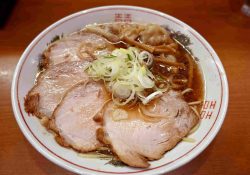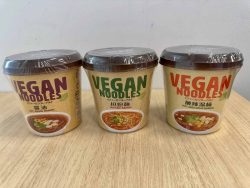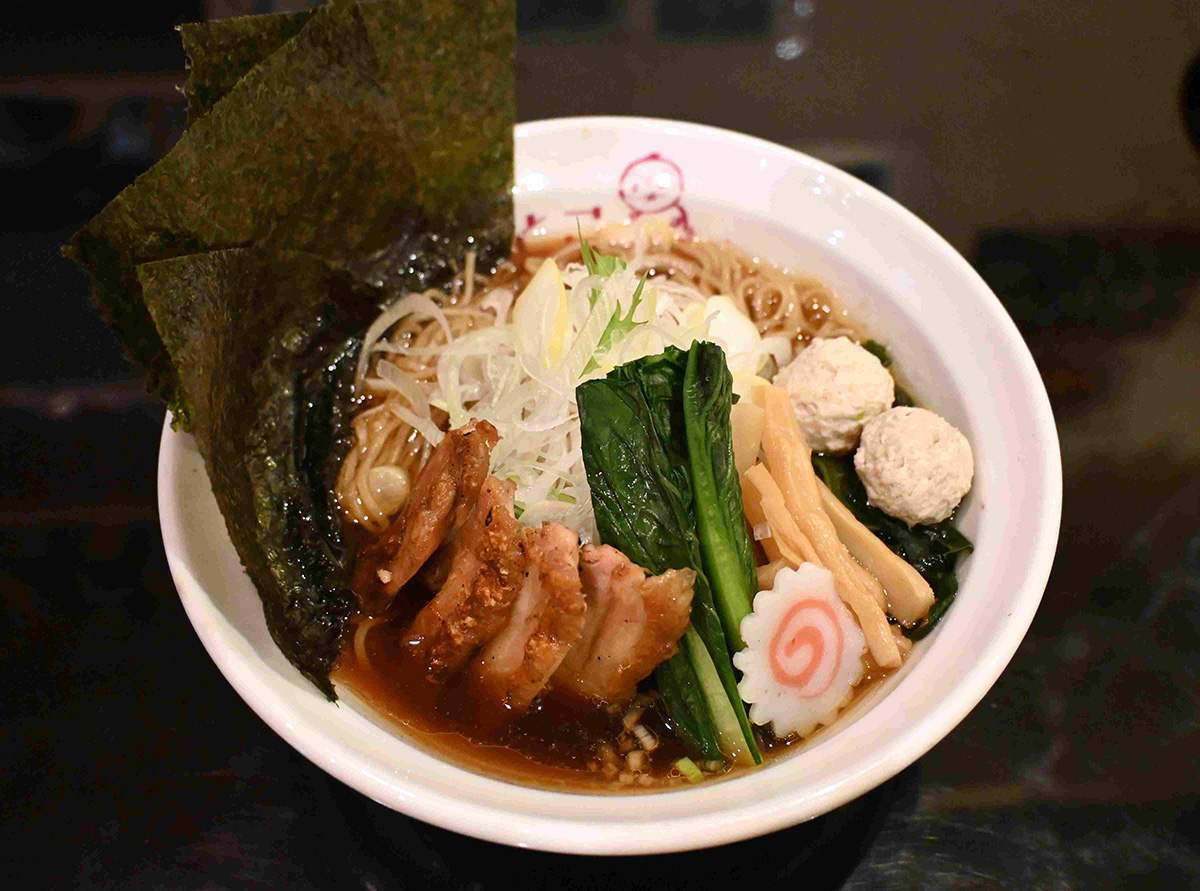
Topping-laden special Totoco shoyu ramen (¥1,130), a signature dish
11:53 JST, February 17, 2023
“Yamagata City has reclaimed the country’s top spot.” So read a household survey released this month by the Internal Affairs and Communications Ministry. The survey was referring to per-household spending on ramen noodles in 2022, for which Yamagata City came in at No. 1 with ¥13,196 for the year, surpassing Niigata City, the previous top spenders. Hearing this news, I suddenly remembered Totoco, a ramen shop in Kanda-Ogawamachi, Tokyo, that serves ramen using ingredients from Yamagata Prefecture. Totoco is an affectionate word in the Yamagata dialect for birds, used like “doggy” or “kitty.”
Shop owner Yukiko Sugawara, a native of Yamagata Prefecture, makes her ramen with love and care, just like a mother. “I try to use ingredients from Yamagata as much as possible and make ramen that is healthy for you,” she explained, having appeared behind the counter in a crimson chef’s shirt. Sugawara, 64, with her calm voice and soft smile, continued, “The broth is made from chicken and a heap of vegetables. I make my ramen thinking of my customers as family.”
I have been to Totoco several times, and once had a drink of Yamagata sake there with my colleagues in the evening, accompanied by a la carte dishes and ramen to finish off the meal. In and outside the shop, as well as on the menu, there are detailed explanations of the ingredients and kinds of ramens available. They are an expression of the cook’s passion for familiarizing people with what the restaurant has to offer, but first-timers may need a bit of courage as the entrance to the shop has a unique look with lots of information posted on the door and wall. The ramen, though, is also unique, with many varieties to choose from. This time, I ordered for ¥1,130 the special Totoco shoyu (soy sauce) ramen, which comes with several additional toppings piled over the regular Totoco shoyu ramen (¥850), one of the shop’s signature pieces.
-
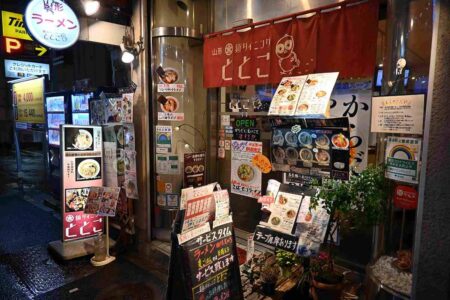
The entrance to the shop has a unique feel, with lots of menu and shop information posted on the wall and door.
-
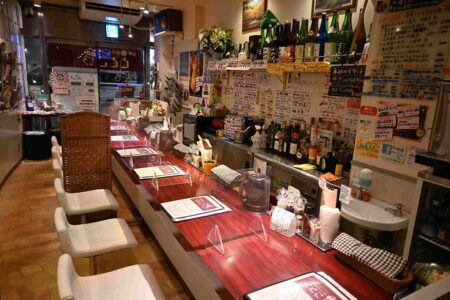
The shop interior with its L-shaped counter. At night, you can enjoy it like an izakaya pub with a glass of Yamagata sake or a local beer. “Please feel free to come for just trying the ramen,” says Sugawara.
-

Table seating
-
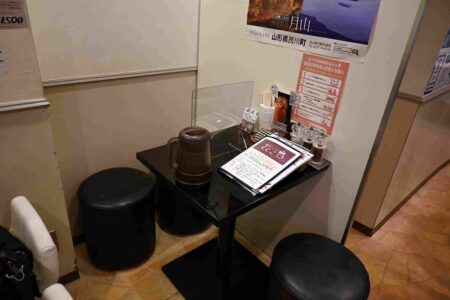
A small table
-
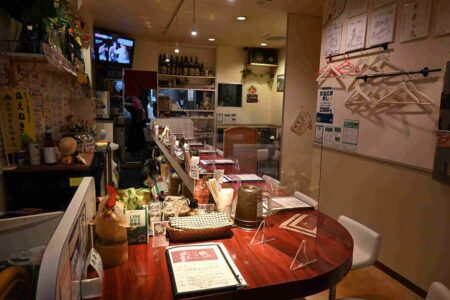
The interior of the shop as seen from the entrance
Sugawara entered the kitchen and began roasting chicken chashu on a charcoal grill. “I grill the chicken beforehand, let it cool, and cut it into pieces,” she said. “Then, when I make the ramen, I roast the chicken over a charcoal fire. It makes the skin crispy.” While she waited for the chicken to cook, she boiled the noodles and prepared the broth. In a bowl, she added a kaeshi sauce made from Marusei soy sauce from Yamagata City, vegetable oil, and thick homemade dashi soup stock prepared from mackerel and sardines. Interestingly, she also added powdered black pepper. “When I was a child, I used to eat Yamagata ramen with pepper over nori seaweed, and that aroma of the pepper was always the first thing to hit my nose. Those are strong memories, so that’s why I’m doing it this way,” she said. She then added yuzu peel, which leaves a refreshing scent after the meal, and a few other ingredients, and stirred the mixture to even out the flavor, before finally adding the broth and noodles.
-

Sugawara adjusting the charcoal
-
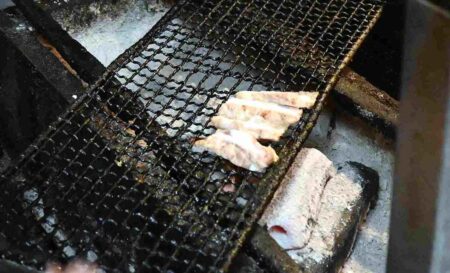
Chicken chashu being roasted over a charcoal fire
-
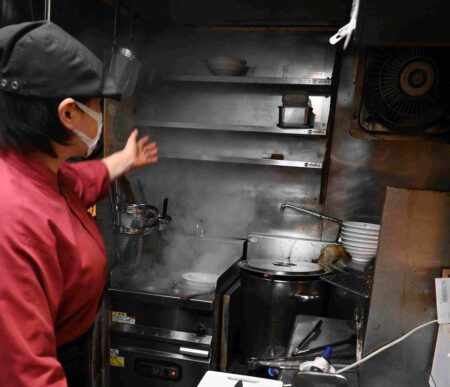
Sugawara points to a shelf and says, “After lunch time, almost all the bowls on the shelf are gone.”
-
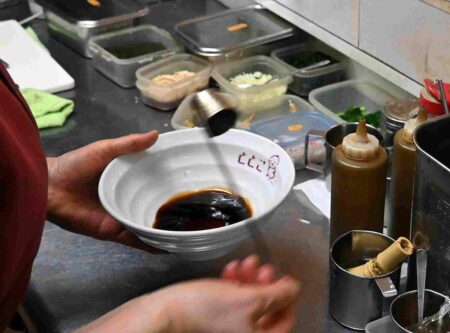
Kaeshi sauce made with Yamagata soy sauce is put into a bowl.
-
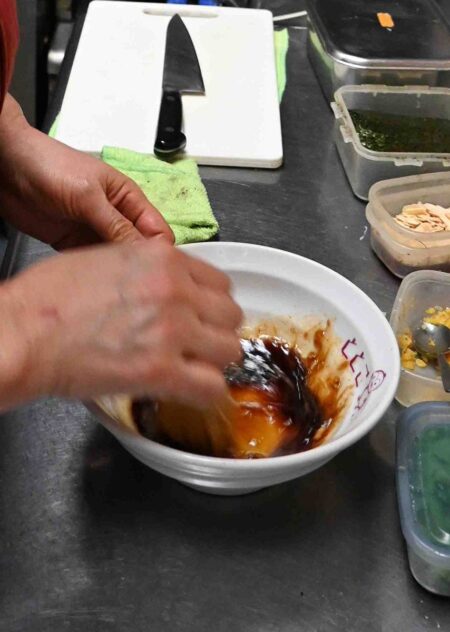
Sugawara blends the kaeshi sauce, vegetable oil and black pepper to make the mixture uniform.
The ramen, laden with toppings, was placed in front of me on the table, ready to eat. First, I tasted the broth. It was filled with a gentle umami flavor that gradually unfolded in my mouth. It was silky, and delicious enough for me to down a cask of it. Sugawara said that the smoothness comes from the vegetables incorporated. The broth is prepared daily and added to a large pot for the next day’s use. In addition to chicken meat, skin and feet, the broth also includes onions with the skins left on, leeks, carrots, ginger, dried Japan-grown shiitake mushrooms, garlic and scallops, among other ingredients. The chickens used are from Yonezawago Ranch in Yamagata Prefecture, which practices organic agriculture and uses near-natural feed.
-
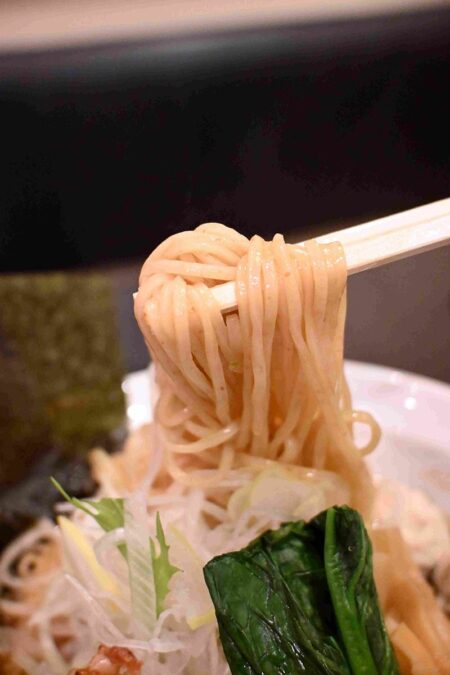
The thin, high water content noodles have a glutinous texture.
-
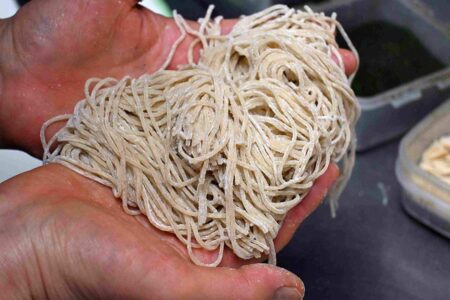
Custom-made thin noodles. They are somewhat dark in color due to the use of whole wheat flour.
-
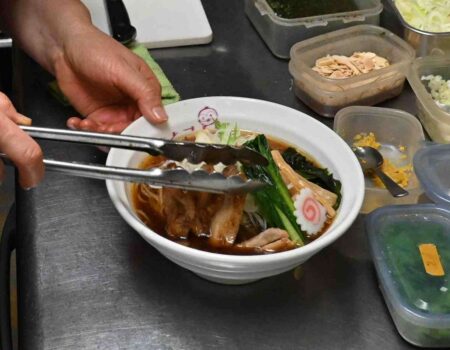
Toppings are quickly and deftly added on.
The ramen’s thin noodles made from Hokkaido wheat have a glutinous texture due to their high water content. They hold the soup well, and one can taste the wheat flavor. They are slightly dark in color due to their being made with whole wheat flour, which is specially ordered from a noodle mill, and are aged for several days before being served at the shop. The toppings are all superb, and the special ramen option is plentiful and filling. In addition to chicken chashu, the special option features handmade chicken meatballs mixed with Yamagata miso (Japanese bean paste), plenty of green onions, komatsuna leeks, wakame seaweed, bamboo shoots, nori seaweed, and naruto fish cake specially ordered from a vendor in Yaizu, Shizuoka Prefecture. “It’s like I shoved everything I want customers to eat into the bowl,” said Sugawara, a smile on her face. Hearing her say, “You can drink up all the broth if you like,” I drained the bowl dry.
Yamagata’s dominance “no surprise”
-

One corner of the shop is dedicated to materials related to Yamagata Prefecture.
-
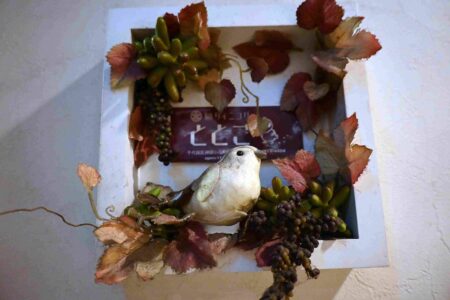
A small bird ornament displayed in the shop
-

Autographs of celebrities cover the wall.
When I mentioned Yamagata City’s reclaiming the top spot in Japan for ramen spending, Sugawara simply said, “I think that’s no surprise.”
Yamagata City has a strong hospitality culture, and when relatives or guests come to your home, you order them some ramen or soba noodles. As a child, Sugawara was often left at her grandparents’ home in Yamagata City during the summer and winter breaks, and she was always sure to witness such a scene. She says guests would feel unable to refuse the offer even if they were full.
“But I wonder if things will be the same in the future,” Sugawara thought aloud. In recent years, she said, shops serving both soba and ramen have been splitting up to specialize in one or the other, and more and more customers are driving out to yakiniku restaurants to treat their guests.
Aiming for taste of home, health
-
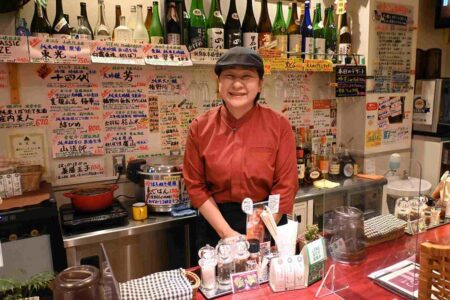
Shop owner Yukiko Sugawara smiles gently.
-
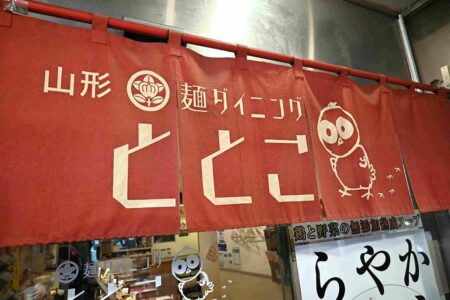
The family crest for Sugawara’s mother’s side of the family, the Maru ni Tachibana, is used on the shop’s banner.
-
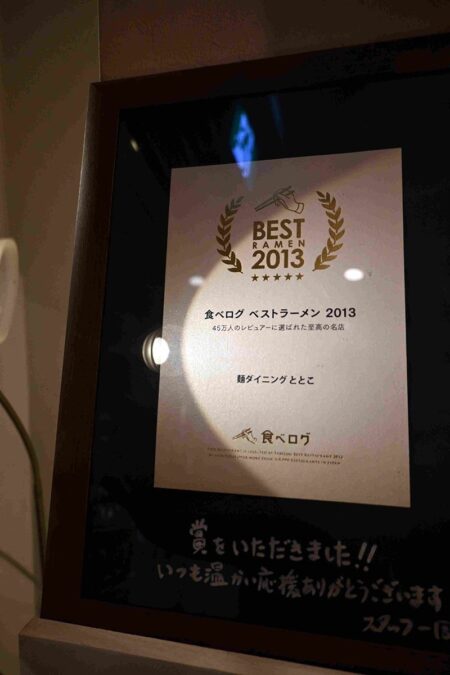
The shop was named one of the best ramen shops in Japan in 2013 by Tabelog.
Sugawara was born and raised in Nishikawa Town, home to the famed Mt. Gassan, and there her parents ran a diner that served ramen, soba, and set meals. Sugawara moved to Tokyo to study food engineering at Nihon University. She later married and had three children, working all the while in the restaurant industry, including family restaurant chains, Japanese restaurants and Italian restaurants. In the course of her work, she often tried the food at nearby restaurants.
With this experience in hand, she opened Totoco in July 2012. However, she said that it all started out of desperation, and it was a big gamble for her. Her father had become seriously ill and she wanted put him in a facility where he could be cared for. But that would cost a lot of money. The diner that her parents had run in Nishikawa Town had at one time been so successful that many customers came by tourist bus, but business gradually fell off, and in the end, they fell prey to a scam and lost everything. After that, her parents moved to Tokyo, where they struggled to make ends meet, including by working at a company dormitory as live-in staff. Sugawara was then busy working part-time and still raising her children. However, her part-time income was not enough to help her parents, so she and her eldest son opened Totoco.
She sought to recreate the ramen she used to eat at her father’s diner and the quality of the chickens from her grandfather’s egg business in Yamagata City. She could not forget the taste of the fresh eggs and chicken she ate at her grandfather’s house, and finally came across the equally delectable chickens from Yonezawago Ranch. “In the end,” says Sugawara, “what I arrived at was my parents’ home cooking that I had eaten so long ago.” After moving to Tokyo, Sugawara said that the ramen she ate sometimes made her thirsty or gave her a stomachache. So, she decided to “make healthy ramen using ingredients from Yamagata,” and she initially came up with three signature ramen dishes.
These staples were shoyu ramen, spicy sour ramen (¥950) made with authentic Yamagata-brewed apple cider vinegar and chives, and black sesame tantan spicy noodles (¥950) with black sesame seeds and almonds. At lunchtime, the dishes are served with more toppings, along with barley rice, a yakuzen egg boiled with sansho (Japanese pepper) and hakkaku (star anise), and a mini salad with apple cider vinegar, and they are a big hit at only ¥1,000. The area also sees many students. She sometimes sneaks more vegetables in for her young customers, whom she worries about. “Is that boy eating any vegetables?” she’ll wonder to herself.
-
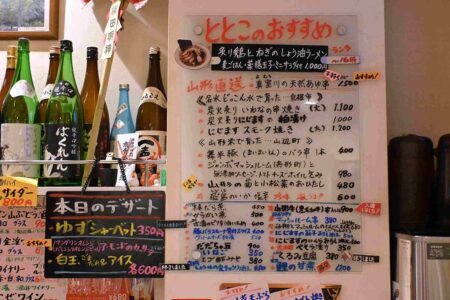
A la carte dishes are also plentiful. At the top of the board is the lunch menu. The ramen served for lunch changes daily.
-
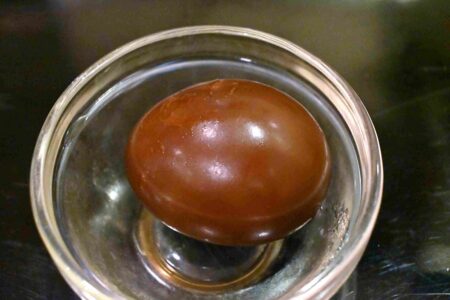
A yakuzen egg (¥100), which takes two days to make
-
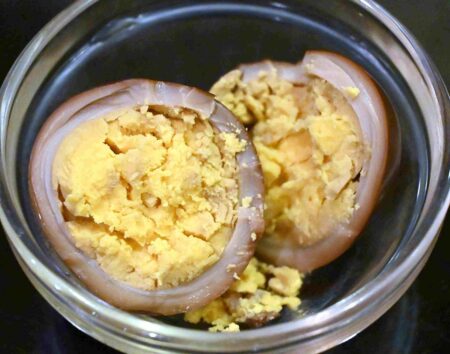
The eggs give of an enticing aroma of star anise.
-
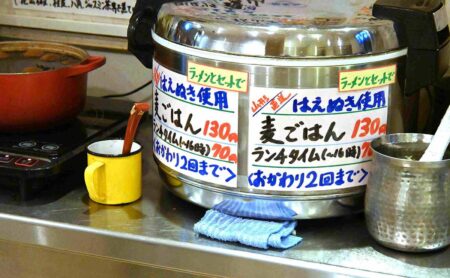
A cooker full of barley rice made with Yamagata-brand Haenuki rice, shipped directly from Yamagata
Sugawara’s father died at the age of 83 shortly after Totoco opened, without ever having tasted its ramen. Her eldest son, who started the business with her, has become a chef at a Spanish restaurant. The shop is now run by Sugawara and her staff.
While costs have risen and many ramen shops have hiked prices by ¥100 or ¥200, Totoco’s ramen is only up ¥30. Sugawara has found herself putting gratitude to her customers before profit. Reflecting on the shop’s 11 years in business, Sugawara said, “I’ve also experienced a lot and grown up.” Over the years, the shop’s appearance and health consciousness have grown closer and closer to her distinctive vision. “I’ll continue to make ramen I can serve with pride, telling people, ‘Try this one!’” she said.
-
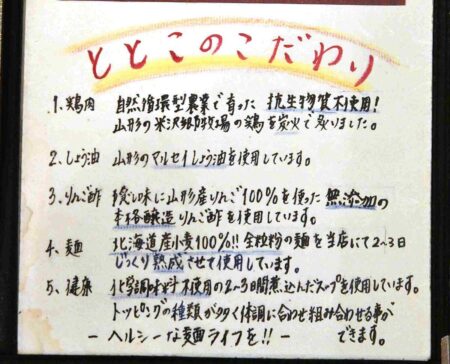
Information is provided on the cover of the menu explaining Totoco’s commitment to the ramen craft.
-
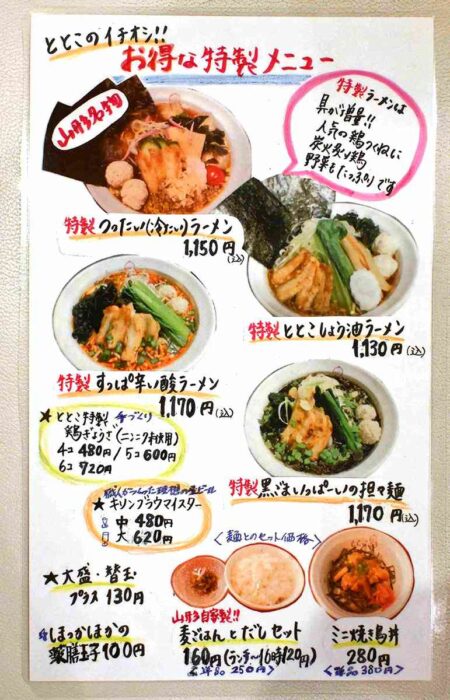
A variety of special menu items
-
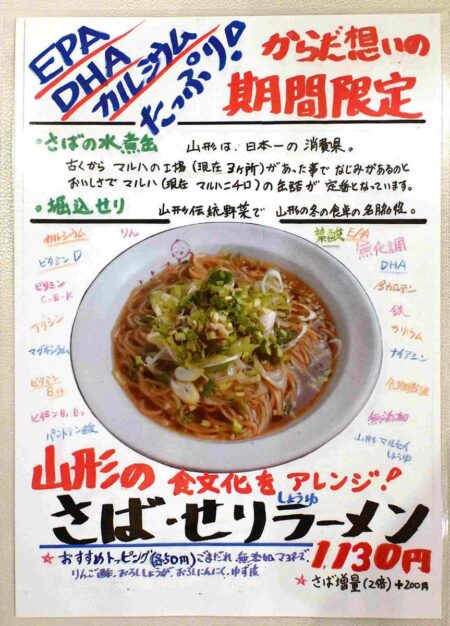
Mackerel and water celery ramen (¥1,130), available for a limited time
-

The toppings menu. The illustrations were drawn by Sugawara’s daughter, who has an artistic bent.
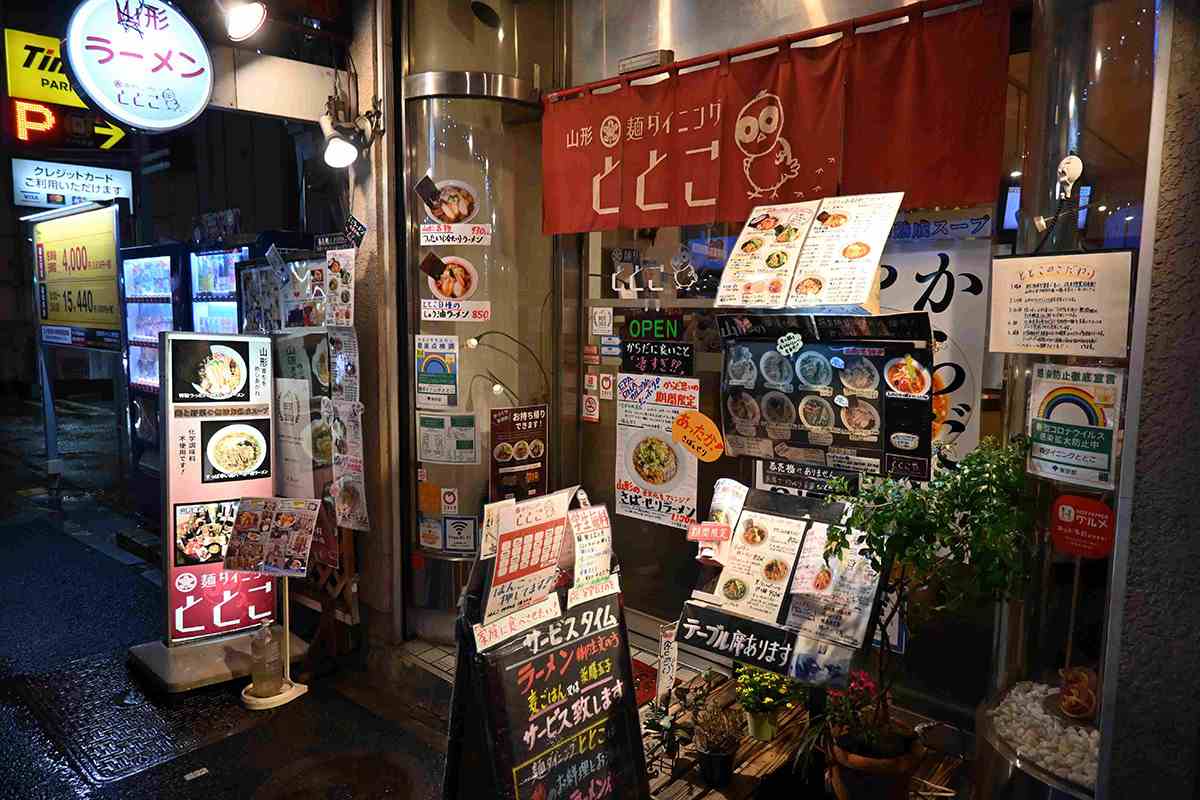
Totoco
3-10-9 Kanda-Ogawamachi, Chiyoda Ward, Tokyo. Open from 11:00 a.m. to 10:30 p.m. (last order at 10:00 p.m.). Closes at 3:00 p.m. on Sundays. Open every day except for during the Bon and New Year’s holidays. For the latest information, visit the shop’s website at https://totoco.net/
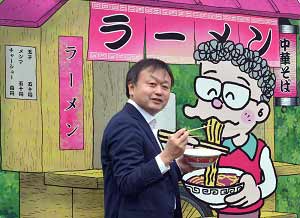
Futoshi Mori, Japan News Senior Writer
Food is a passion. It’s a serious battle for both the cook and the diner. There are many ramen restaurants in Japan that have a tremendous passion for ramen and I’d like to introduce to you some of these passionate establishments, making the best of my experience of enjoying cuisine from both Japan and around the world.
Japanese version
【ラーメンは芸術だ!】ラーメン消費額日本一・山形の味を東京・小川町で「麺ダイニングととこ」

"JN Specialities" POPULAR ARTICLE
-

The Japan News / Weekly Edition (12/12-12/18)
-

Noodle Dining Shunsai / Rich Oyster Ramen to Savor at Odasaga; Experienced 68-year-old Owner Creates Numerous Ramen Varieties
-

The Japan News / Weekly Edition (12/5-12/11)
-

People Keep Loved Ones’ Ashes Close in Special Jewelry, Small Urns as Unique Way to Memorialize Them
-

The Japan News / Weekly Edition (12/19-12/25)
JN ACCESS RANKING
-

Tokyo Economic Security Forum to Hold Inaugural Meeting Amid Tense Global Environment
-

Keidanren Chairman Yoshinobu Tsutsui Visits Kashiwazaki-Kariwa Nuclear Power Plant; Inspects New Emergency Safety System
-

Imports of Rare Earths from China Facing Delays, May Be Caused by Deterioration of Japan-China Relations
-

University of Tokyo Professor Discusses Japanese Economic Security in Interview Ahead of Forum
-

Japan Pulls out of Vietnam Nuclear Project, Complicating Hanoi’s Power Plans



